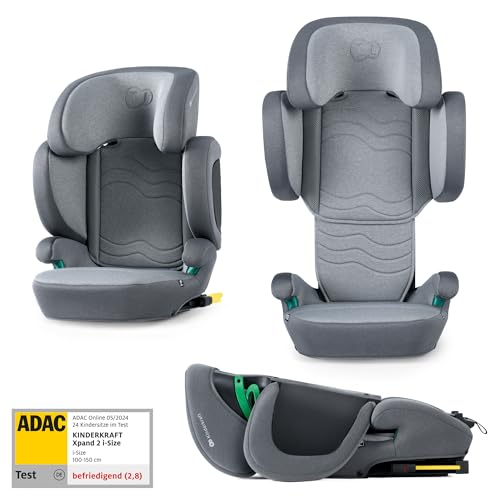Prams and Pushchairs: A Comprehensive Guide for New Parents
Browsing the world of baby transportation can be overwhelming for new parents, particularly when it pertains to selecting between prams and pushchairs. Each choice offers unique benefits and constraints, implying that making a notified decision is vital. This post aims to supply a thorough understanding of prams and pushchairs, their differences, features to consider, and suggestions for choosing the ideal one.
Understanding the Basics: Prams vs. Pushchairs
Prams and pushchairs are terms typically utilized interchangeably, but they refer to different kinds of baby transport systems.
Definitions:
- Prams: Traditionally designed for newborns and babies, prams have a large, completely flat bassinet that permits for optimum comfort and safety during early phases of a child's life.
- Pushchairs: Designed for older babies and young children, pushchairs generally have an upright seat that is appropriate for kids who can support their head and neck. They often feature adjustable recline alternatives.
Secret Differences
| Feature | Pram | Pushchair |
|---|---|---|
| Style | Flat bassinet | Upright seat |
| Age Suitability | Newborn to around 6 months | 6 months to 4 years |
| Portability | Typically much heavier, less foldable | Often light-weight and foldable |
| Convenience | Relaxing for newborns, snug fit | Adjustable, can be reclined |
| Usage | Perfect for walks and leisure | Versatile for daily activities and travel |
Functions to Consider When Choosing Prams and Pushchairs
Security Features
- Harness systems (5-point vs. 3-point)
- Braking systems (foot-operated vs. hand-operated)
- Stability and strength of the frame
Weight and Portability
- Think about the weight of the pram or pushchair
- Search for a model that folds easily for transportation
Size and Storage
- Examine measurements for fitting through doorways and in automobile trunks
- Look for additional storage options like baskets or pockets
Convenience
- Cushioned seats and adjustable recline positions
- Suspension systems for smoother rides on rough surfaces
Weather Protection
- UV protection in sunshades
- Alternatives for rain covers and windscreens
Wheels and Maneuverability
- Wheel size and type (repaired vs. swivel)
- Suspension systems that aid handling and convenience
Durability
- Models that transform from pram to pushchair
- Stronger frames that can accommodate growing children
Popular Types of Prams and Pushchairs
When considering prams and pushchairs, moms and dads often find numerous styles catering to particular needs. Here are some widely known types:
1. Requirement Prams/Pushchairs
These are great all-rounders, designed for everyday use with a strong frame and sufficient storage area. They are often adjustable and can deal with numerous surfaces.
2. Travel Systems
These consist of a safety seat and a stroller that can be used together, making it simple to move the baby from the car to the pram without waking them up.
3. Umbrella Strollers
These are lightweight and foldable, perfect for quick getaways and travel. While convenient, they often do not have a few of the safety and comfort functions found in heavier models.
4. All-Terrain Strollers
Designed for off-road adventures, these strollers have larger wheels and a more rugged frame, making them perfect for active families.
Picking the Right Pram or Pushchair
When picking the ideal pram or pushchair, parents ought to take the following steps:
- Assess Lifestyle Needs: Consider how you will utilize the pram or pushchair (day-to-day strolls, travel, unequal terrain) and select accordingly.
- Test Drive: It's useful to physically check the models at the shop, looking for managing, convenience, and weight.
- Research Brands: Look at evaluations and suggestions from other parents about specific brand names or designs.
- Think About Future Needs: Think ahead to ensure the option will work as the child grows. Convertible models provide flexibility.
- Budget: Set a spending plan but likewise consider quality and durability. Often investing Small Prams For Newborns at first can save expenses in the long run.
Frequently Asked Questions
What is the best age to begin using a pushchair?
The majority of pushchairs can be used for babies from about 6 months old when they can adequately support their heads and necks. Make sure to examine the manufacturer's requirements.
Are prams suitable for newborns?
Yes, prams are ideally fit for newborns due to their flat bassinet design, providing a comfy and secure environment.
How do I clean a pram or pushchair?
Always describe the manufacturer's standards, but many covers are detachable and can be cleaned. Clean down the frame with a wet cloth and avoid using harsh chemicals.
Can I utilize a pram or pushchair on public transport?
Different designs vary in size; lightweight and foldable choices are generally preferable for buses or trains. However, constantly inspect for transport regulations in your location.
How long can I utilize a pram or pushchair?
It generally depends upon the weight limit specified by the producer, frequently between 15-50 lbs, or up until your kid no longer wishes to be pushed.
Choosing in between a pram and a pushchair is a considerable decision that caters to the lifestyle and requirements of both the parent and the child. By comprehending the differences in between the two, evaluating vital features, and picking the ideal design, parents can ensure they have a safe, comfy, and useful transportation service for their little ones.
Equipping oneself with understanding offers parents not just peace of mind however likewise the self-confidence to make the best option for their kid's early experience into the world. Small Prams For Newborns of lives require various options, so taking the time to research and test what fits can alleviate a few of the tensions that come with new being a parent. Delighted walking!

